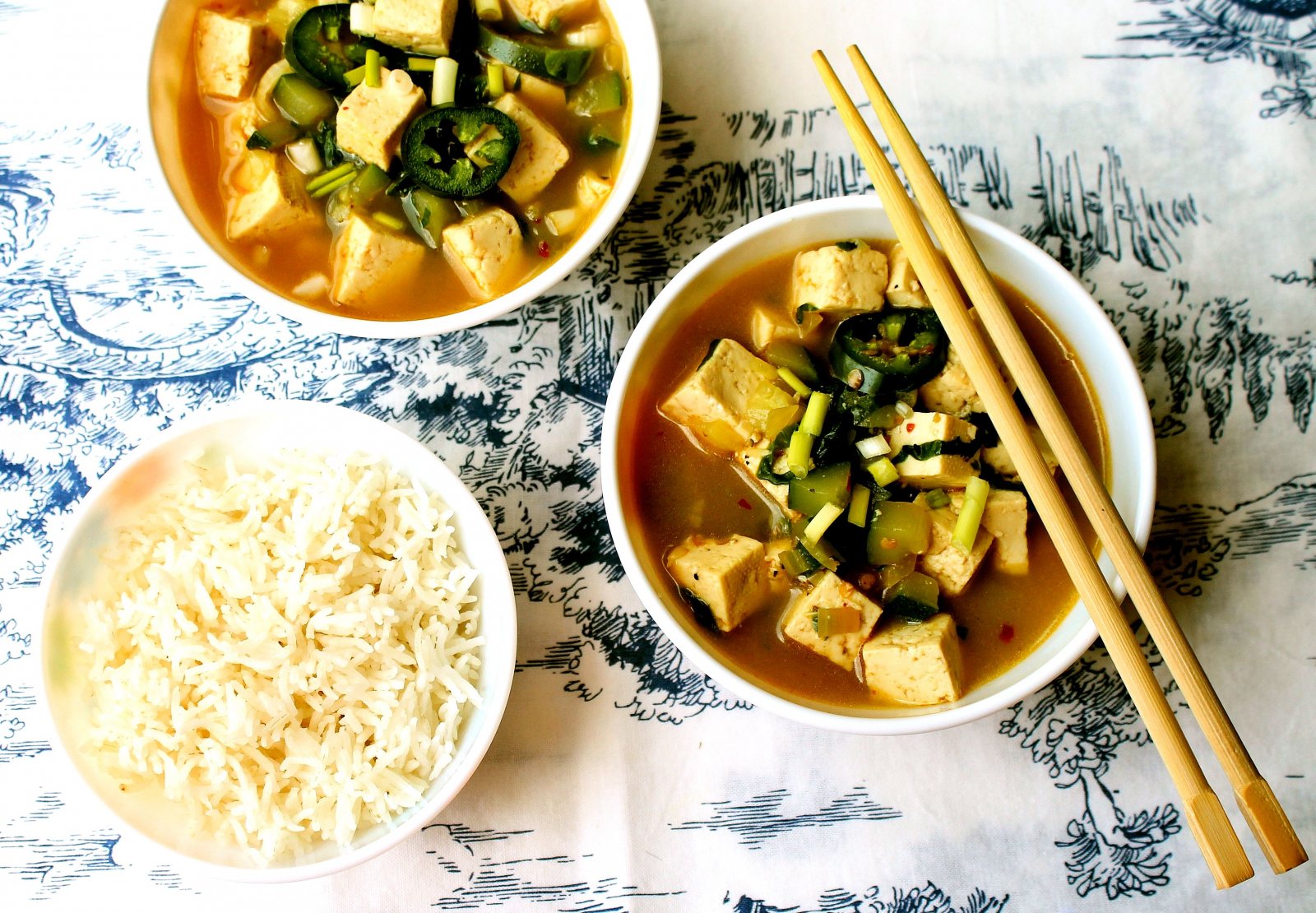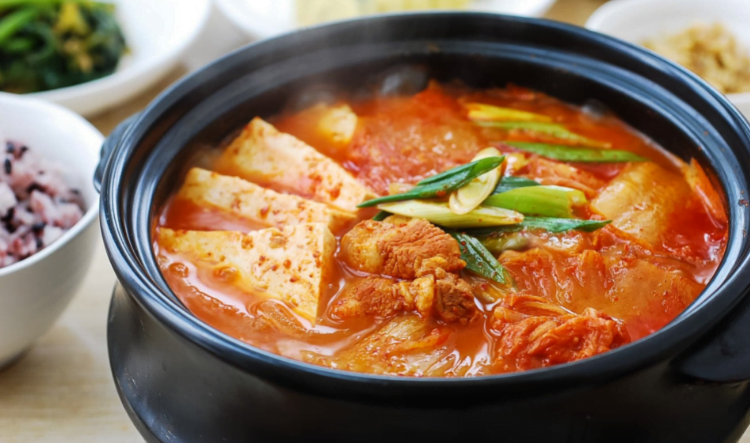Embark on a tantalizing culinary adventure as we delve into the world of Korean stews, a cornerstone of Korean cuisine. Steeped in history and cultural significance, these savory and comforting dishes offer a symphony of flavors that will tantalize your taste buds.
From the fiery kimchi jjigae to the hearty sundubu jjigae, Korean stews are a culinary tapestry that showcases the diversity and richness of Korean cuisine. In this comprehensive guide, we will explore the different types of stews, their unique ingredients, and the cooking techniques that bring them to life.
Introduction

Korean stew, also known as “jjigae” in Korean, is a beloved and integral part of Korean cuisine. These hearty and flavorful dishes are characterized by their rich broths, an abundance of vegetables, and often meat or seafood. Stews are not only a culinary delight but also hold significant cultural importance in Korean society.
Historical and Cultural Context
The origins of Korean stew can be traced back to ancient times when Koreans cooked over an open fire using earthenware pots. Over centuries, the recipes and ingredients used in stews have evolved, reflecting the country’s rich agricultural heritage and diverse culinary influences.
Korean stews have become a symbol of warmth, comfort, and communal dining, often enjoyed during cold winter months or on special occasions.
Types of Korean Stews
Korean stews, known as jjigae, are a diverse and flavorful part of Korean cuisine. They typically feature a savory broth, a variety of vegetables, and a protein source such as meat or tofu.
There are numerous types of Korean stews, each with its unique ingredients and regional variations. Some of the most popular varieties include:
Kimchi Jjigae
Kimchi jjigae is a spicy and tangy stew made with fermented cabbage (kimchi), pork, and various other vegetables such as onions, green onions, and garlic. It is a popular dish throughout Korea and is often served with rice.
Sundubu Jjigae
Sundubu jjigae is a soft tofu stew made with soft tofu, beef or pork, and a variety of vegetables. It is typically served with a spicy gochujang-based sauce.
Dubu Jjigae
Dubu jjigae is a firm tofu stew made with firm tofu, beef or pork, and various vegetables. It is typically served with a less spicy sauce than sundubu jjigae.
| Stew Name | Main Ingredients | Regional Variations |
|---|---|---|
| Kimchi Jjigae | Kimchi, pork, vegetables | Jeolla-do (pork belly, kimchi made with salted shrimp), Gyeongsang-do (oysters, mussels) |
| Sundubu Jjigae | Soft tofu, beef/pork, vegetables | Jeolla-do (mussels, clams), Gyeongsang-do (sautéed pork with kimchi) |
| Dubu Jjigae | Firm tofu, beef/pork, vegetables | Jeolla-do (mushrooms, green onions), Gyeongsang-do (sautéed pork with kimchi) |
Ingredients Commonly Used in Korean Stews
Korean stews are renowned for their bold flavors and comforting warmth. A symphony of essential ingredients orchestrates this culinary masterpiece, each contributing a unique note to the harmonious ensemble.
Essential Ingredients:
- Gochujang: A spicy fermented paste made from red chili peppers, glutinous rice, soybeans, and salt. It adds vibrant color, heat, and a complex savory flavor to stews.
- Doenjang: A fermented soybean paste with a milder flavor than gochujang. It provides a rich, earthy umami depth and adds a slightly salty tang to stews.
- Dashima: Dried kelp or seaweed that imparts a subtle yet essential seafood flavor to stews. It adds a briny sweetness and enhances the overall savoriness.
- Soy Sauce: A fermented sauce made from soybeans, wheat, and salt. It adds a salty and savory dimension to stews, balancing the other ingredients.
- Garlic: Fresh garlic cloves or minced garlic add a pungent and aromatic flavor to stews. They enhance the overall complexity and depth of the dish.
- Ginger: Fresh ginger or ground ginger provides a warm and spicy note to stews. It balances the heat of gochujang and adds a refreshing zing.
- Green Onions: Fresh green onions or scallions add a crisp texture and a mild oniony flavor to stews. They brighten the dish and enhance its presentation.
These essential ingredients form the backbone of Korean stews, creating a harmonious blend of flavors that tantalize the taste buds and warm the soul.
Cooking Techniques for Korean Stews
Korean stews are renowned for their rich flavors and comforting textures, and the cooking techniques employed play a crucial role in achieving these culinary delights. Traditional Korean stew preparation involves a combination of simmering, braising, and stir-frying, each method contributing unique characteristics to the final dish.
Simmering
Simmering is a gentle cooking method that involves maintaining a low, steady heat, just below the boiling point. This allows the stew to cook slowly and evenly, infusing the ingredients with flavors and creating a tender texture. Simmering is ideal for stews that require extended cooking times, such as beef or pork stews, to ensure the meat becomes fall-off-the-bone tender.
Braising
Braising is a two-step cooking method that combines browning and simmering. The ingredients are first browned in a pan to create a flavorful crust, then transferred to a covered pot or Dutch oven and simmered in a flavorful liquid. This technique is particularly well-suited for tougher cuts of meat, as the initial browning helps to develop a rich color and the subsequent simmering tenderizes the meat.
Stir-Frying
Stir-frying is a quick-cooking technique that involves cooking ingredients in a hot pan or wok while stirring constantly. This method is often used to prepare stir-fried vegetables or seafood stews, where the ingredients retain their vibrant colors and textures. Stir-frying requires high heat and quick cooking times to prevent the ingredients from overcooking and becoming mushy.
Tips for Achieving Perfect Texture and Flavor
- Use high-quality ingredients, especially the meat, to ensure a flavorful stew.
- Brown the meat before simmering to develop a rich crust and enhance the stew’s flavor.
- Add vegetables in stages, starting with those that require longer cooking times.
- Use a variety of seasonings and spices to create a balanced and flavorful broth.
- Simmer the stew for an extended period to allow the flavors to meld and the meat to become tender.
- Taste and adjust the seasonings as needed to achieve the desired flavor.
Regional Variations of Korean Stews
Korean stews exhibit diverse regional variations across different provinces and cities, each boasting unique ingredients and cooking styles that reflect local culinary traditions.
Gyeonggi-do (Seoul and Surrounding Areas)
Stews from the Gyeonggi-do region, including Seoul, are known for their use of a wide variety of ingredients, including vegetables, seafood, and meats. Popular stews from this region include galbitang (beef rib soup), seolleongtang (ox bone soup), and samgyetang (ginseng chicken soup).
Jeolla-do (Southwestern Region)
Jeolla-do stews are renowned for their bold flavors and generous use of seafood and fermented ingredients. Jeonju bibimbap , a mixed rice dish with a variety of toppings including vegetables, meat, and a spicy sauce, is a popular stew from this region.
Other notable stews include kongnamul guk (soybean sprout soup) and bossam (boiled pork with fermented shrimp sauce).
Gyeongsang-do (Southeastern Region)
Stews from the Gyeongsang-do region are characterized by their use of spicy ingredients and a variety of seafood. Andong jjimdak (braised chicken with vegetables) is a popular stew from this region, known for its spicy and flavorful broth.
Other notable stews include chamchi guk (persimmon soup) and dongchimi (radish water kimchi).
Gangwon-do (Eastern Region)
Stews from the Gangwon-do region are often made with local mountain vegetables and freshwater fish. Naengmyeon (cold buckwheat noodles) is a popular dish from this region, served in a cold, spicy broth. Other notable stews include dak galbi (spicy stir-fried chicken) and makguksu (cold buckwheat noodles with vegetables).
Serving and Accompaniments for Korean Stews
Korean stews are typically served hot in a communal pot, placed at the center of the table. This allows diners to share the stew and enjoy the convivial atmosphere.
Accompanying the stew are a variety of side dishes, or banchan , which complement the flavors and textures of the stew. Common side dishes include rice, kimchi, pickled vegetables, and various salads.
Condiments
In addition to side dishes, Korean stews are often served with a selection of condiments, such as gochujang (Korean chili paste), doenjang (soybean paste), and ssamjang (a spicy dipping sauce made with gochujang and doenjang ). These condiments add an extra layer of flavor and heat to the stew.
Closing Summary

As you delve into the art of Korean stew-making, you will not only discover delectable dishes but also gain a deeper appreciation for the culinary traditions and cultural heritage of Korea. Whether you are a seasoned cook or a novice in the kitchen, this guide will empower you to create authentic and flavorful Korean stews that will warm your heart and soul.
FAQ Summary
What is the difference between kimchi jjigae and sundubu jjigae?
Kimchi jjigae is a spicy stew made with fermented kimchi, pork, and vegetables, while sundubu jjigae is a tofu-based stew with a milder flavor and a silky smooth texture.
What is the secret to making a flavorful Korean stew?
The key to a flavorful Korean stew lies in the use of a flavorful base, such as gochujang (Korean chili paste), doenjang (Korean soybean paste), and dashima (dried kelp). These ingredients provide depth of flavor and umami.
How do I achieve the perfect texture in my Korean stew?
The ideal texture for a Korean stew is a balance between tenderness and firmness. Simmering the stew over low heat for an extended period allows the ingredients to meld together and develop a rich and velvety texture.
